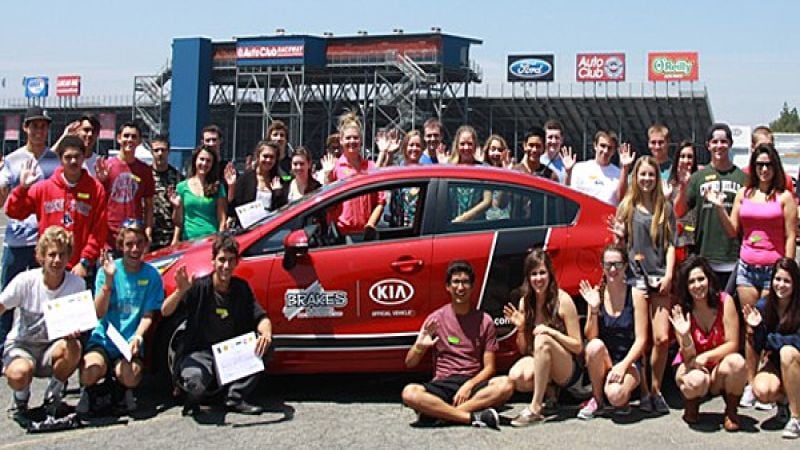Kia Motors America and B.R.A.K.E.S. (Be Responsible And Keep Everyone Safe) Teen Pro-Active Driving School, recently added new cities to the 2013 training calendar. As the official vehicle and presenting sponsor of B.R.A.K.E.S., Kia provided a fleet of 32 vehicles to support the charity’s life-saving mission. B.R.A.K.E.S. provides teens nationwide with no-cost, hands-on training, including a distracted driving exercise, emergency braking using the anti-lock braking system (ABS), evasive maneuvering and skid-control practice.
In my opinion, Kia is doing something that is both socially responsible and good business. Teach teens how to drive, make them like and feel confident in your cars, and maybe, just maybe, mom and dad are going to pitch in to buy their little teen driver a Kia.
But, most importantly, Kia is doing a lot to help teen drivers avoid getting injured or killed. “More than 85-percent of teens will have an accident in their first three years on the road,” said B.R.A.K.E.S. founder Doug Herbert, who knows a lot about driving from his days as an NHRA Top Fuel drag racer. “Kia’s partnership has helped expand the training program to new cities and save lives by educating teens and their parents about the importance of defensive driving techniques.”
Founded in 2008, B.R.A.K.E.S. has provided safe driving instruction courses for nearly 10,000 students in the U.S. and Canada. The school offers nearly four hours of hands-on training with a low three-to-one student-to-teacher ratio to ensure personal attention, and parents participate in the courses alongside their teens to ensure proper driving techniques are reinforced following the session. Teens with parents who set driving rules and monitor their activities are half as likely to crash, 71 percent less likely to drive intoxicated, 30 percent less likely to use a cell phone when driving and less inclined to speed.
The B.R.A.K.E.S. Training Curriculum includes the following –
- Accident Avoidance/Slalom: The two-part course simulates an animal or object jumping out in front of a car. It forces students to make a split-second reaction to help negotiate a quick, evasive lane change without losing control of the vehicle. Students must navigate their vehicle around cones while focusing on weight transfer, hand positioning and eye scanning.
- Distracted Driving: In 2009 it was estimated more than 5,400 people died in crashes that were reported to involve a distracted driver and about 448,000 people were injuredii. The course demonstrates the danger that cell phones, text messaging, and other distractions can pose while driving.
- Drop Wheel/Off Road Recovery: The drop-wheel recovery course teaches students how to effectively recover from a drop-wheel situation by regaining control of the car and safely returning to the roadway.
- Panic Stop: Teens often lack the experience needed to judge a safe following distance. The panic stop course instructs students on proper braking techniques to help stop a vehicle in the shortest distance possible while maintaining control. Students experience firsthand the pulsating brake pedal effects of ABS and how to control the vehicle when ABS in engaged.
- Car Control and Recovery: A wet skid pad simulates wet-road conditions. Students learn how to recover from both over-steer (rear wheel) and under-steer (front wheel) skids.












